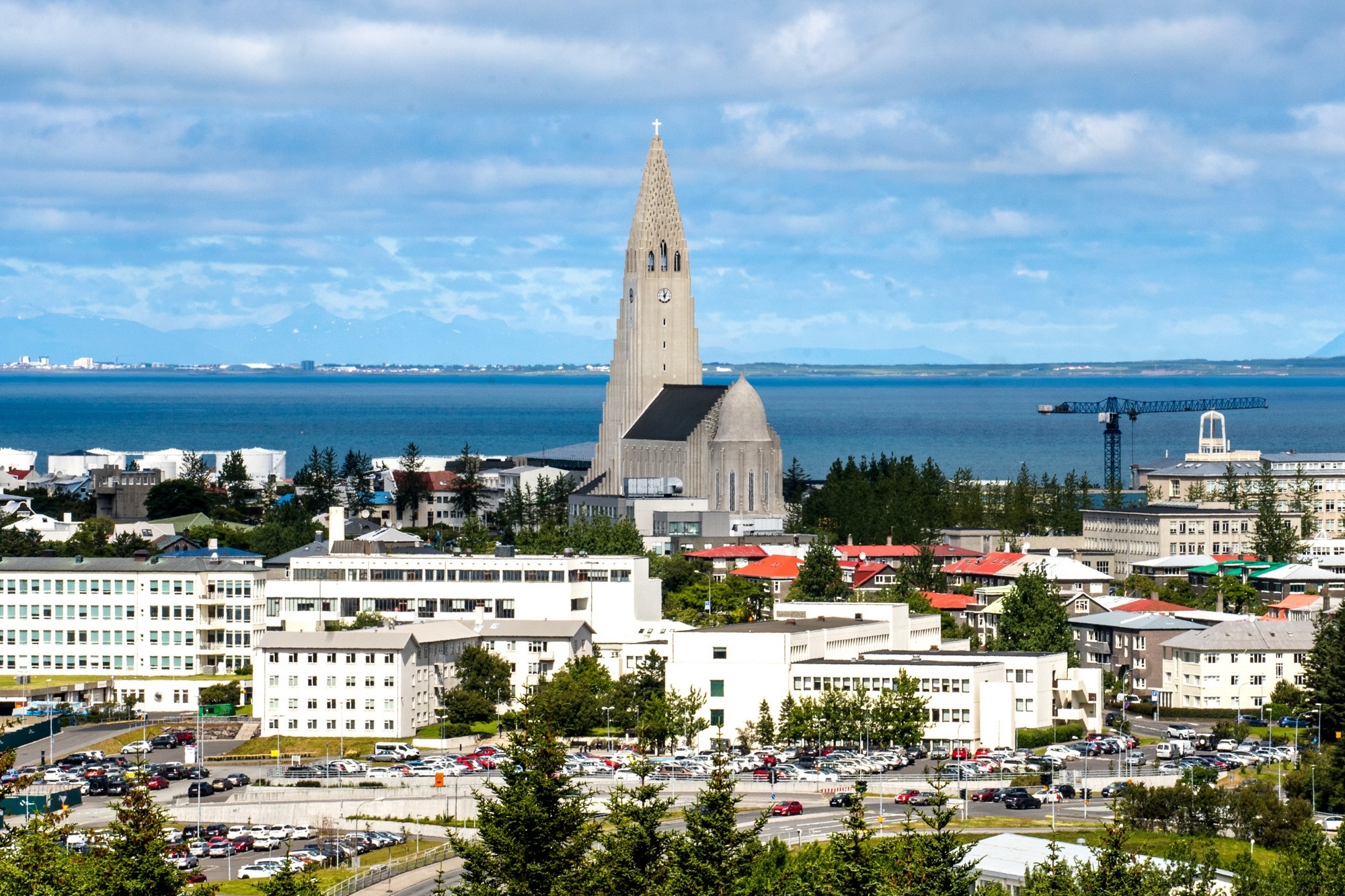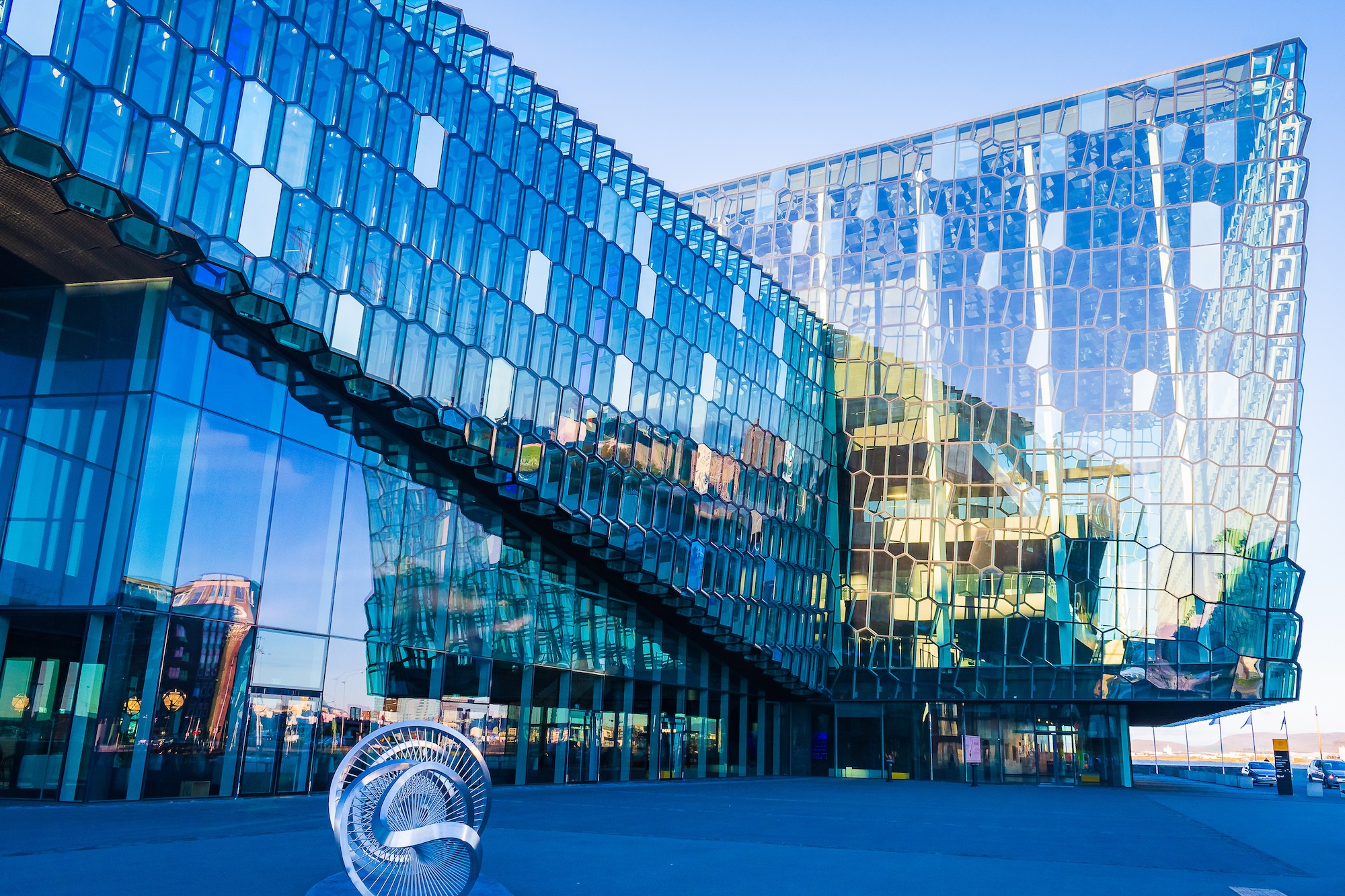
World Travel Tips
What Should You Do in Reykjavík?
Reykjavík, Iceland’s charming capital, blends rich history, stunning nature, and vibrant modern culture. Whether you’re drawn to Viking heritage, innovative architecture, or simply soaking in scenic beauty, Reykjavík offers a unique mix of experiences for every traveler. Here are the top 10 attractions you should not miss when visiting Reykjavík:
1. Hallgrímskirkja

One of Reykjavík’s most recognizable landmarks, Hallgrímskirkja is a towering church that dominates the city’s skyline. Designed to resemble Iceland’s basalt lava columns, this architectural masterpiece offers panoramic views of the city from its observation tower.
Why visit?
The combination of striking design and unbeatable views makes Hallgrímskirkja a must-see. Visitors can admire its unique exterior, explore its beautiful yet minimalist interior, and enjoy one of the best photo opportunities in all of Reykjavík.
2. Harpa Concert Hall

Harpa Concert Hall is a modern architectural gem located along Reykjavík’s waterfront. Its shimmering glass façade reflects both the sea and sky, creating a visual masterpiece. Inside, the hall hosts world-class concerts, cultural events, and exhibitions.
Why visit?
Whether you attend a performance or just admire the building, Harpa showcases Reykjavík’s contemporary cultural side. Its design is stunning, and its location offers excellent views of the harbor and nearby mountains.
3. Perlan

Perched atop a hill, Perlan is a futuristic building with a revolving glass dome offering incredible 360-degree views. Inside, visitors can explore an interactive exhibition on Iceland’s natural wonders, including glaciers, volcanoes, and the northern lights.
Why visit?
Perlan is a perfect blend of education and entertainment, making it ideal for families and curious travelers alike. The observation deck also provides one of the best views of Reykjavík.
4. Sun Voyager
Sun Voyager is a striking steel sculpture along Reykjavík’s scenic waterfront. Designed to resemble a Viking ship, it symbolizes exploration, freedom, and adventure. The backdrop of the mountains across the bay makes this a perfect spot for photos.
Why visit?
This is one of Reykjavík’s most photographed landmarks, and it’s especially beautiful at sunrise or sunset. Sun Voyager embodies Iceland’s deep connection to the sea and its spirit of discovery.
5. The Settlement Exhibition
Located in downtown Reykjavík, The Settlement Exhibition is an archaeological site that preserves the remains of a Viking longhouse dating back to the 9th century. The museum’s interactive displays bring Iceland’s earliest history to life.
Why visit?
History buffs will love exploring Reykjavík’s Viking roots at The Settlement Exhibition. It offers a rare glimpse into the daily life of Iceland’s first settlers, all in the heart of the modern city.
6. Laugavegur Shopping Street
Laugavegur is Reykjavík’s main shopping and dining street, known for its vibrant atmosphere. Lined with boutiques, cafés, bars, and restaurants, this lively street is the heart of the city’s social life.
Why visit?
Strolling down Laugavegur is the best way to experience Reykjavík’s culture and creativity. You’ll find everything from local designer shops to quirky souvenirs, plus plenty of chances to sample Icelandic cuisine.
7. National Museum of Iceland
The National Museum of Iceland tells the story of the nation from its Viking settlement to modern times. Its well-curated exhibits feature artifacts, photographs, and interactive displays that cover Iceland’s cultural, social, and political history.
Why visit?
To understand Iceland’s unique history and heritage, The National Museum is a must-visit. It’s both informative and engaging, providing essential context for the rest of your Icelandic adventure.
8. Reykjavík Old Harbour
Reykjavík Old Harbour is a picturesque and historic area that now serves as a hub for whale-watching tours, puffin cruises, and seafood dining. With colorful boats, waterside restaurants, and views of Mount Esja, it’s a charming place to explore.
Why visit?
Whether you’re setting off on an ocean adventure or just enjoying the relaxed vibe, Reykjavík Old Harbour is a great spot to experience the city’s maritime culture.
9. Árbær Open Air Museum
Step back in time at Árbær Open Air Museum, where historic Icelandic buildings have been preserved to create a living history village. Costumed guides demonstrate traditional crafts and tell stories of life in Reykjavík’s past.
Why visit?
This immersive museum offers a unique, hands-on glimpse into Iceland’s rural and urban history. Árbær Open Air Museum is a wonderful way to experience Reykjavík’s heritage in a beautiful outdoor setting.
10. Tjörnin Pond
Located right in the center of the city, Tjörnin is a scenic pond surrounded by colorful houses and public buildings. It’s a popular spot for locals and visitors alike, especially for feeding the resident swans, ducks, and geese.
Why visit?
Tjörnin is the perfect place for a peaceful walk or a moment of calm in the middle of the city. In winter, the pond often freezes over, creating a magical winter wonderland, while in summer it’s a lively gathering spot.
Seasonal Recommendations
☀️ Summer (June-August): This is the peak tourist season with long daylight hours and mild weather, with average temperatures ranging from 50–57°F (10–14°C). It’s perfect for outdoor attractions like Sun Voyager, Tjörnin, and walking along Laugavegur. Whale-watching tours from Reykjavík Old Harbour are also very popular in summer.
❄️ Winter (December-February): Reykjavík becomes a magical winter wonderland with snow-dusted landscapes and average temperatures hovering between 28–36°F (-2 to 2°C). Indoor attractions like The Settlement Exhibition, Perlan, and The National Museum of Iceland are ideal during colder days. This is also the best season to chase the northern lights, which often appear on clear winter nights.
🌸 Spring (March-May): A quieter time to visit with fewer tourists and a chance to enjoy the city waking up after winter. Average temperatures during this season range from 30–45°F (-1 to 7°C). This is a great time for cultural experiences at Harpa or the Árbær Open Air Museum, as well as scenic walks around Tjörnin.
🍁 Autumn (September-November): This is a shoulder season with vibrant fall colors, fewer crowds, and still plenty of cultural events. Temperatures generally range from 35–50°F (2–10°C). It’s an excellent time to enjoy both outdoor and indoor attractions while experiencing local festivals and events.
Reykjavík Excursions
Tips for Your Visit
Getting Around
- Walk the City Center: Reykjavík’s downtown is compact and pedestrian-friendly, making it easy to explore key attractions on foot.
- Use Public Buses: The Strætó bus system covers Reykjavík and nearby suburbs. Download the Strætó app to check schedules and purchase tickets.
- Rent a Car for Day Trips: If you plan to visit natural wonders outside the city, renting a car offers the most flexibility and convenience.
Local Cuisine
- Sample Icelandic Classics: Try local favorites like lamb stew, fresh seafood, and skyr (Icelandic yogurt).
- Grab a Famous Hot Dog: Don’t miss Bæjarins Beztu Pylsur, Reykjavík’s legendary hot dog stand serving iconic lamb hot dogs.
- Relax in a Cozy Café: Reykjavík’s coffee culture is vibrant—enjoy a locally roasted coffee paired with a fresh pastry.
Language
- English is Widely Spoken: Most locals speak fluent English, especially in tourist areas, so communication is easy.
- Learn a Phrase or Two: Adding simple Icelandic words like “Takk” (thank you) or “Halló” (hello) can make a great impression.
Safety
- Extremely Safe City: Reykjavík has one of the lowest crime rates in the world, making it ideal for solo travelers and families.
- Watch the Weather: Icelandic weather is unpredictable—always check the forecast and dress in layers.
- Respect Nature: If exploring natural sites, stay on marked paths to protect fragile ecosystems and ensure your safety.
3 Popular Restaurants
Reykjavík’s dining scene is a vibrant blend of traditional Icelandic flavors, modern Nordic cuisine, and international influences. Whether you’re looking for a fine dining experience or a cozy local spot, these three restaurants are consistently rated as some of the best in the city.
1. Dill
Location: Laugavegur 59, 101 Reykjavík, Iceland View On Map
Cuisine: Modern Nordic / Icelandic
Why It’s Popular: Dill holds the distinction of being Iceland’s first Michelin-starred restaurant, making it a culinary landmark in Reykjavík. Renowned for its innovative use of local ingredients such as Arctic char, lamb, and wild herbs, Dill offers a seasonal tasting menu that celebrates Iceland’s natural bounty. Its minimalist yet warm atmosphere reflects the beauty of Nordic design, creating a complete sensory experience.
What Makes It Stand Out: Dill’s commitment to sustainable, locally sourced ingredients and its creative reinterpretation of traditional Icelandic dishes make it a must-visit for food enthusiasts. Each dish tells a story about Iceland’s land and culture, making every meal unforgettable.
2. Fiskmarkaðurinn (The Fish Market)
Location: Aðalstræti 12, 101 Reykjavík, Iceland View On Map
Cuisine: Seafood / Fusion
Why It’s Popular: As its name suggests, Fiskmarkaðurinn specializes in seafood, offering some of the freshest fish and shellfish in the city. The menu is a fusion of Icelandic ingredients and Asian-inspired flavors, resulting in creative dishes like sushi made with Arctic char or miso-glazed cod. The sleek, modern interior and open kitchen add to the restaurant’s dynamic atmosphere.
What Makes It Stand Out: Fiskmarkaðurinn stands out for its unique blend of Icelandic seafood traditions and bold Asian flavors, making it a top choice for adventurous diners. Its creative menu, artistic presentation, and commitment to fresh, high-quality ingredients make every visit an exciting culinary journey.
3. Matur og Drykkur
Location: Grandagarður 2, 101 Reykjavík, Iceland View On Map
Cuisine: Traditional Icelandic
Why It’s Popular: Matur og Drykkur is known for reviving and modernizing old Icelandic recipes, bringing historic dishes into the present with creativity and flair. From Icelandic cod head to traditional meat soup, the menu offers an authentic taste of the country’s culinary heritage. The restaurant’s cozy, rustic setting adds to its charm.
What Makes It Stand Out: By putting a contemporary twist on traditional Icelandic dishes, Matur og Drykkur offers visitors a true taste of Iceland’s food culture. It’s a must for anyone wanting to explore the country’s culinary roots while enjoying modern presentation and thoughtful preparation.
Tips for Dining in Reykjavík
Dining in Reykjavík is a memorable experience that combines fresh local ingredients, traditional Icelandic dishes, and international influences. Whether you’re looking to try fermented shark, enjoy seafood fresh from the North Atlantic, or simply grab a quick hot dog from a famous stand, this guide will help you make the most of your culinary adventure in Iceland’s capital.
1. Taste Icelandic Specialties
Reykjavík offers plenty of opportunities to sample unique Icelandic dishes that reflect the country’s culture and harsh yet beautiful environment. From plokkfiskur (traditional fish stew) to smoked lamb and skyr, Icelandic cuisine is simple, hearty, and rooted in local ingredients.
Tip: If you’re feeling adventurous, you can even try hákarl (fermented shark)—just be prepared for its strong aroma and intense flavor!
2. Fresh Seafood is a Must
Being surrounded by the pristine waters of the North Atlantic, it’s no surprise that Reykjavík is a paradise for seafood lovers. Local restaurants offer everything from beautifully prepared cod and Arctic char to langoustines and scallops.
Tip: Many restaurants source their seafood directly from local fishermen, so ask your server about the freshest catch of the day.
3. Don’t Skip the Famous Hot Dogs
Bæjarins Beztu Pylsur, Reykjavík’s iconic hot dog stand, has become a cultural institution. These lamb-based hot dogs, topped with crispy onions and a blend of sauces, are beloved by locals and visitors alike.
Tip: Order your hot dog *eina með öllu*, meaning “one with everything,” to get the full experience.
4. Tap Water is Safe (and Delicious!)
Iceland is known for having some of the purest water in the world, and tap water in Reykjavík is perfectly safe to drink. In fact, many locals will tell you it’s better than bottled water.
Tip: Bring a reusable water bottle and fill up at the tap. It’s free, eco-friendly, and tastes fantastic.
5. Reservations are Recommended
Reykjavík’s restaurant scene is thriving, and many of the most popular spots can fill up quickly, especially in summer or on weekends. It’s always smart to book a table in advance.
Tip: Use online platforms like TheFork or book directly through the restaurant’s website to secure your spot, particularly for Michelin-starred or highly-rated places like Dill.
6. Budget Wisely—Dining Can Be Pricey
Dining out in Reykjavík can be expensive compared to other European cities. Imported ingredients and Iceland’s high cost of living contribute to the prices.
Tip: To save money, mix up your dining with a combination of casual eats (like hot dogs or food trucks) and sit-down meals. Also, check for lunch specials, which are often more affordable than dinner menus.
7. Explore Reykjavík’s Café Culture
Beyond fine dining, Reykjavík has a thriving café scene, offering cozy spots to warm up with locally roasted coffee and freshly baked pastries.
Tip: Visit a local café for an afternoon break and try a traditional Icelandic cinnamon bun called *snúður*—it pairs perfectly with a cup of coffee.
Conclusion
Dining in Reykjavík is more than just eating—it’s an exploration of Iceland’s culture, natural bounty, and innovative culinary scene. Whether you’re splurging on Michelin-starred cuisine, sampling Icelandic street food, or sipping coffee in a charming café, these tips will help you savor every moment. With exceptionally pure tap water, fresh seafood, and unique local flavors, Reykjavík promises a dining experience you’ll never forget. Verði þér að góðu! (Enjoy your meal!)








